|
The Solar Eclipses of 1994
http://www.wolfram.com/applications/astronomer/index.html
setup
First we shall load the package, and set our TimeZone.
<<Astronomer`HomeSite`

SetLocation[GeoLongitude 145.0 Degree, 145.0 Degree,
GeoLatitude -37.8 Degree, -37.8 Degree,
TimeZone 11]; 11];
Eclipses
[This Notebook contains some animations.]
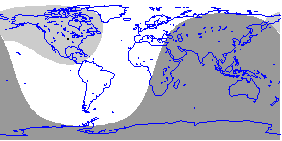
During a typical year the Moon will orbit the Earth nearly 13 times. Two of those orbits will usually pass so close to the direction of the Sun that the Moon will cast a shadow onto the surface of the Earth. Such events are called solar eclipses, and depending on how close the Moon and Sun get, the event will be termed either a partial, total, or annular solar eclipse.
During 1994 there was an annular solar eclipse and a total solar eclipse.
By using Scientific Astronomer you can easily compute and display such events. For example the package provides a functions called Separation to compute the angular separation between any two celestial objects on any given date as seen from any viewpoint. When the separation is zero, then one of the objects will be eclipsed by the other. Once the date of such an event is known (and this can be computed using functions like SolarEclipse), then another function called PlanetPlot can be used to see how the shadow will fall on the object. Additional functions, such as MoonShadow, are available to compute the precise position of the shadow. And EclipseBegin and EclipseEnd can be used to give the precise start and end times of the eclipse as seen from some location.
Earth Plots and Solar Eclipses
There are two solar eclipses in 1994. The first happened on May 10:
SolarEclipse[{1994,1,1}]

and the second on November 3:
SolarEclipse[{1994,6,1}]

Here is a 2D model showing part of the November, 1994 total solar eclipse:
PlanetPlot[Earth,{1994,11,4,0,0,0}];

When using PlanetPlot to display the state of the planet Earth during a solar eclipse, additional gray areas appear which represent the shadow of the Moon. This shadow can be split into two distinct regions.
The center part of the shadow is where the Sun is totally blocked out by the Moon, and its size is typically about 100km across. This part sweeps across the surface of the Earth at roughly 2000km/hour and so any given point will be in darkness for just a few minutes at most. In the output from PlanetPlot this total eclipse region is represented as a very small black dot.
The outer part of the shadow is where the Sun is only partly blocked out by the Moon, and its size can be very large. In the output from PlanetPlot this partial eclipse region is represented as a slightly grayed out area which surrounds the black dot of totality.
The 1994 May 10 Annular Solar Eclipse
Here is the annular solar eclipse of 1994 which occured on May 10. The region of annularity swept across North America. Most of North America, the Arctic and parts of Western Europe fell within the partial eclipse region. The black line is the track of total eclipse.
EclipseTrackPlot[{1994,5,10}];
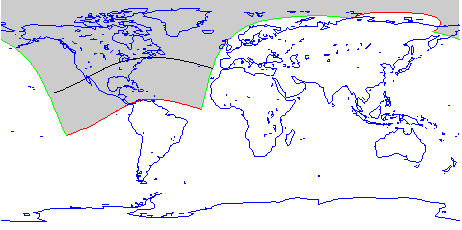
Here is a detailed animation (double-click the image) of what happened.
Do[PlanetPlot[Earth, {1994,5,11,0,m,0}],
{m,0,8 60,15}];


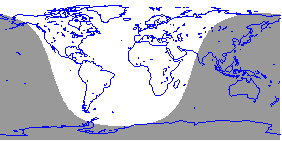
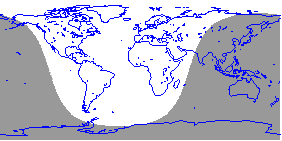


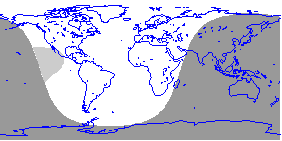

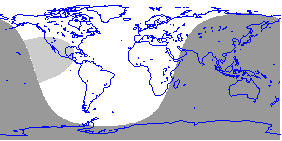
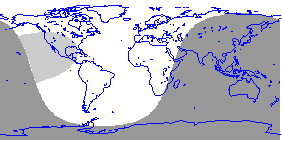


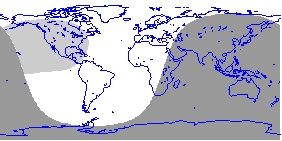


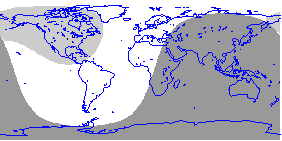
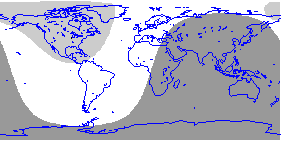








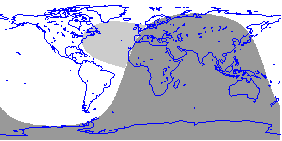
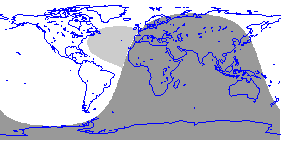
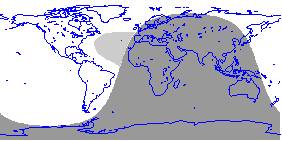
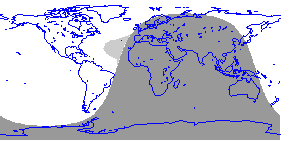
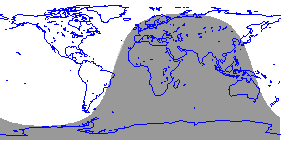
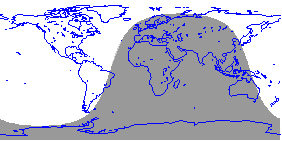

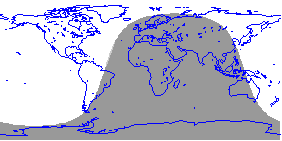
The 1994 November 3 Total Solar Eclipse
Here is the total solar eclipse of 1994 which occured on November 3. The region of totality swept across South America. Most of South America and parts of Southern Africa fell within the partial eclipse region. The black line is the track of total eclipse.
EclipseTrackPlot[{1994,11,3}];
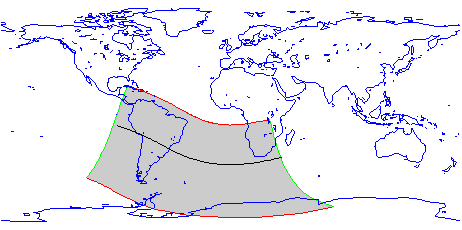
A detailed animation of what happened can be recreated using:
Do[PlanetPlot[Earth, {1994,11,3,21,m,0}],
{m,0,7 60,15}];
The 1996 April 4 Lunar Eclipse
There was a partial eclipse of the Moon in 1994. However the next total eclipse occurs on 1996 April 4.
LunarEclipse[{1996,1,1}]

Here is the track of that total lunar eclipse.
EclipseTrackPlot[
LunarEclipse[{1996,4,3}]];

The Moon is the small circle in the center and it moves, with time, from right to left and passes through the Earth's umbra and penumbra shadows.
Note the lunar eclipse happens around 11am local Melbourne time which, because that is daytime, means the Moon is below the local horizon and therefore not visible. However places on the night-time side of the Earth will be able to see the Moon being eclipsed.
Functions called EclipseBegin and EclipseEnd can be used to find the start and end of the partial eclipse phase.
EclipseBegin[Moon,{1996,1,1}]

EclipseEnd[Moon,{1996,1,1}]

Knowing those times you can compute an animation of the event. But below just two frames are shown.
PlanetPlot3D[Moon,{1996,4,4,8, 30,0}];

The frame above shows the Earth's partial or penumbra shadow (in light red) moving onto the eastern edge of the Moon. An hour later the partial shadow will have covered the entire surface of the Moon. By that time the Earth's total or umbra shadow (in darker red) will have moved onto the Moon, as shown in the next frame.
PlanetPlot3D[Moon,{1996,4,4,9,30,0}];
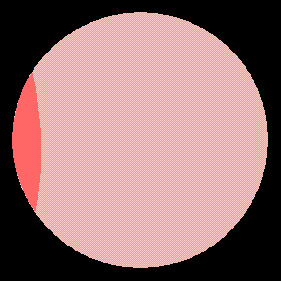
|